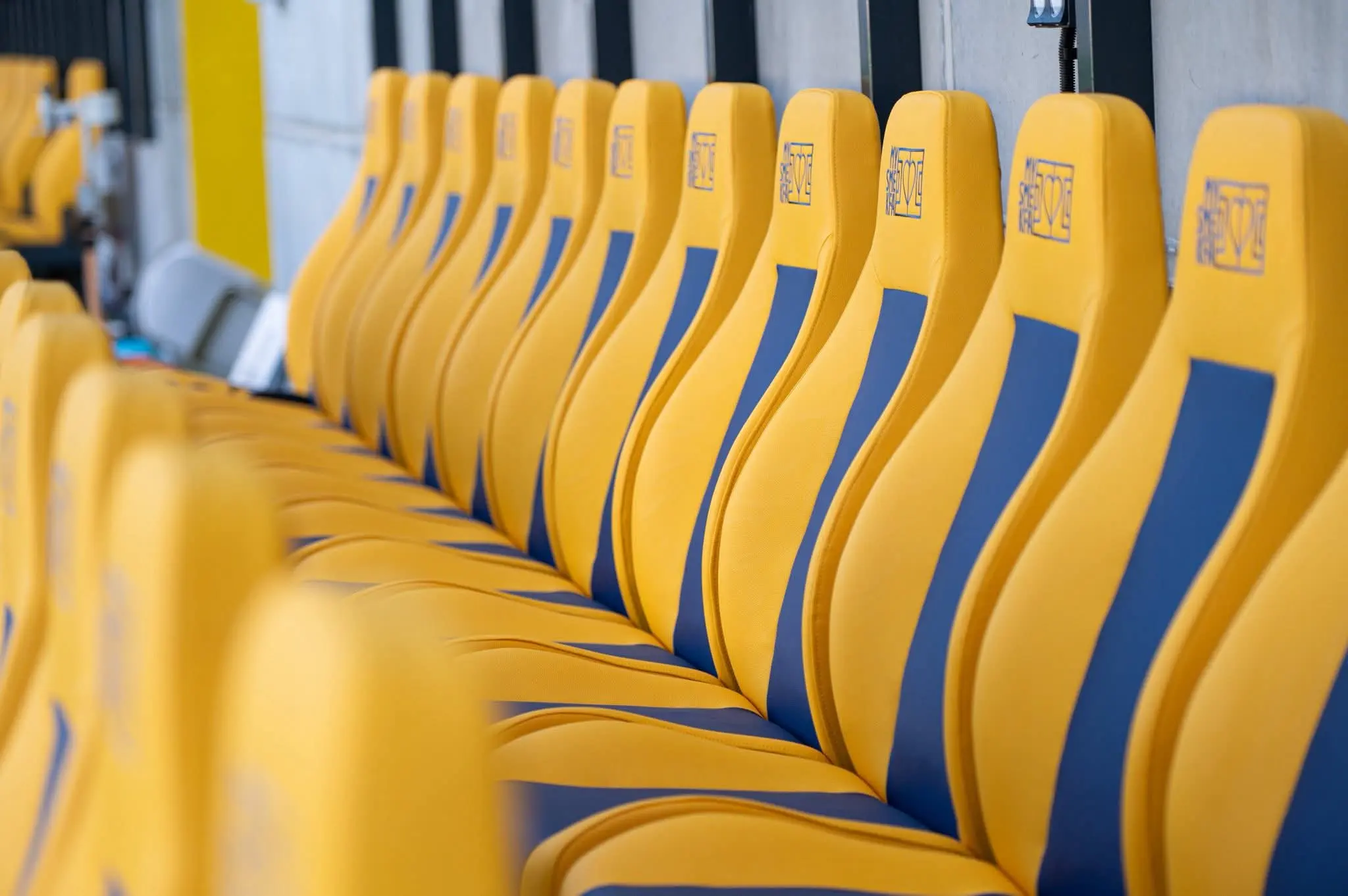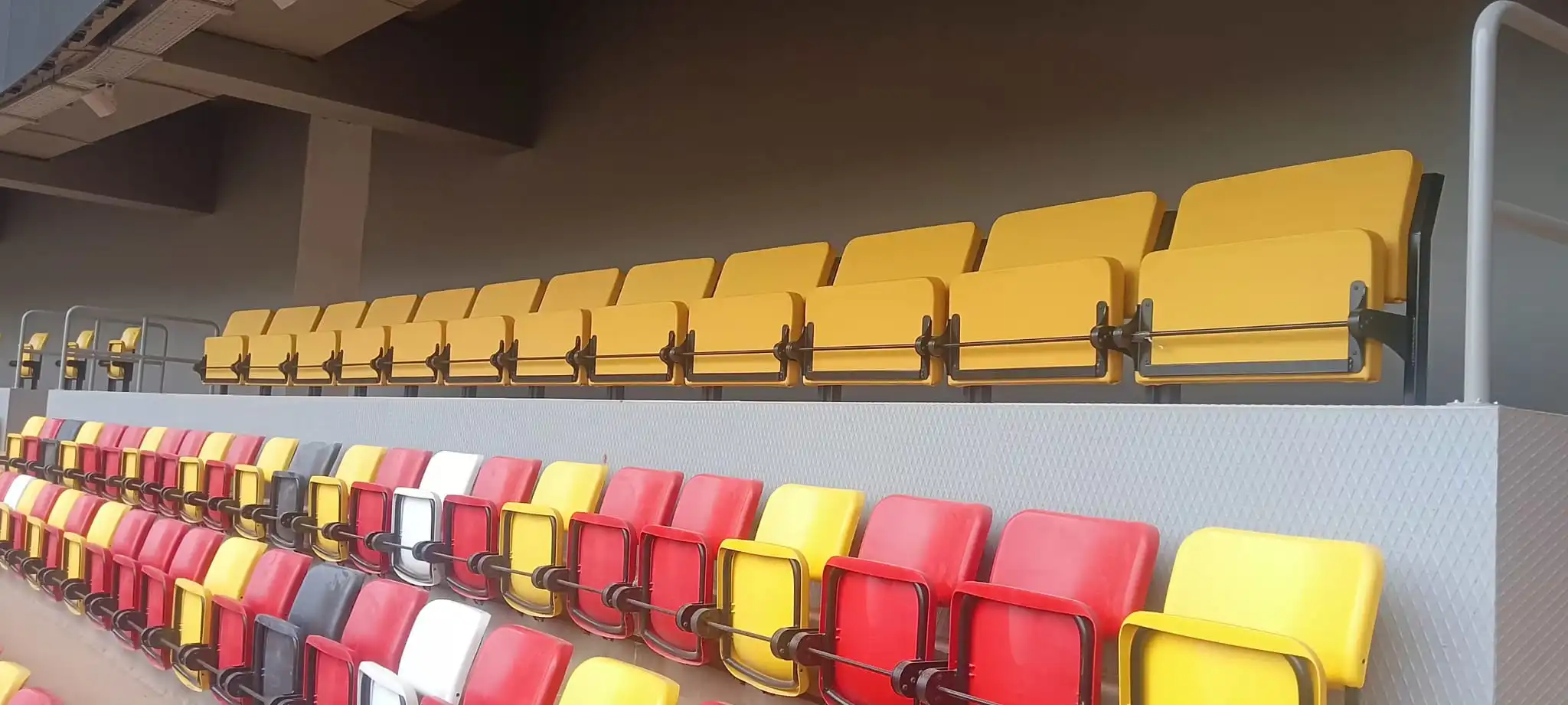The Evolution of Stadium Seating Models for Modern Arenas
Stadiums and sports arenas have always been symbols of community, passion, and cultural pride. Whether in Europe or the Middle East, these venues are more than just structures – they are the heart of collective experiences. Yet, one element often defines the success of any stadium: the seating. Modern stadium seating models are no longer just functional; they have become integral to creating memorable experiences for fans while meeting the highest standards of safety, durability, and comfort.

Why Stadium Seating Models Matter
For decades, stadiums prioritized capacity above all else. Large crowds required simple, durable seating solutions that could withstand heavy usage. While this remains important, today’s audiences expect more. The demand has shifted toward stadium seating that balances strength with comfort, design, and accessibility. Supporters now want to enjoy long matches in ergonomically designed seats, with clear sightlines, personal space, and in many cases, added amenities.
In Europe and the Middle East, where football and other sports attract massive audiences, the quality of stadium seating directly influences fan satisfaction. Poor seating can turn a thrilling event into a negative memory, while high-quality seating transforms stadiums into destinations worth revisiting again and again.
Market Trends in Europe and the Middle East
Across Europe, major clubs and sports organizations are investing heavily in upgrading their stadiums. Renovations often include modern stadium seating models that incorporate contemporary designs, improved durability, and customized branding. From England’s Premier League arenas to Turkey’s rapidly expanding sports infrastructure, the emphasis is clear: world-class seating is a non-negotiable requirement.
In the Middle East, the momentum is even greater. With international events such as the FIFA World Cup in Qatar and ongoing regional sports investments, stadium construction and renovation projects are accelerating. Here, stadium seating plays a vital role in delivering the luxury, comfort, and safety that fans and organizers expect. The Gulf region in particular prioritizes innovation, with seating models that integrate advanced materials, weather resistance, and premium finishes.
Durability and Safety: The Foundation of Stadium Seats
Stadium seating must endure extreme usage conditions. From thousands of fans celebrating goals to exposure to varying weather conditions, durability is a top priority. Modern stadium seating models use high-grade polymers, UV-resistant coatings, and reinforced metal structures to ensure longevity without compromising comfort.
Safety standards in Europe and the Middle East are also becoming more rigorous. Fire-resistant materials, anti-vandal features, and compliance with international building codes are essential components of today’s seating solutions. These features not only protect fans but also reduce maintenance costs for operators.
Design, Branding, and Customization
Beyond functionality, design has emerged as a defining factor for stadium seating. Clubs and operators are increasingly seeking customized solutions that reflect team colors, logos, and branding. Seating arrangements now integrate into the overall identity of the stadium, creating a unified and visually striking atmosphere.
Comfort is another area where modern designs excel. Ergonomic backrests, foldable options, and spacing that maximizes visibility are now standard expectations. VIP and premium seating zones, equipped with extra-wide recliners, cup holders, and exclusive amenities, are also gaining popularity, especially in Gulf countries where luxury is highly valued.
Short Lead Times: Essential for Fast-Moving Projects
Time is often the biggest challenge in stadium projects. Whether preparing for international tournaments or completing renovations between sports seasons, short lead times for production and installation are crucial. Reliable stadium seating suppliers who can deliver large volumes quickly are increasingly sought after in Europe and the Middle East. This efficiency not only ensures project deadlines are met but also gives operators a competitive edge in hosting global events.
The Future of Stadium Seating Models
The future of stadium seating lies in a blend of innovation, sustainability, and audience-focused design. With the rise of eco-friendly materials, modular seating systems, and digital integration (such as seat numbering with smart lighting), the industry is evolving rapidly. Europe’s sustainability goals and the Middle East’s focus on luxury-driven innovation ensure that the next generation of stadium seating models will be both environmentally responsible and technologically advanced.

Investing in Stadium Seating for Long-Term Success
For stadium operators in Europe and the Middle East, seating is no longer a secondary concern – it is a defining factor in fan experience, brand identity, and operational efficiency. Modern stadium seating models provide the durability, comfort, and customization required for world-class arenas, while short lead times ensure projects meet demanding schedules. As stadiums continue to serve as cultural landmarks, the role of seating will only grow in importance, making it a critical investment for the future.


